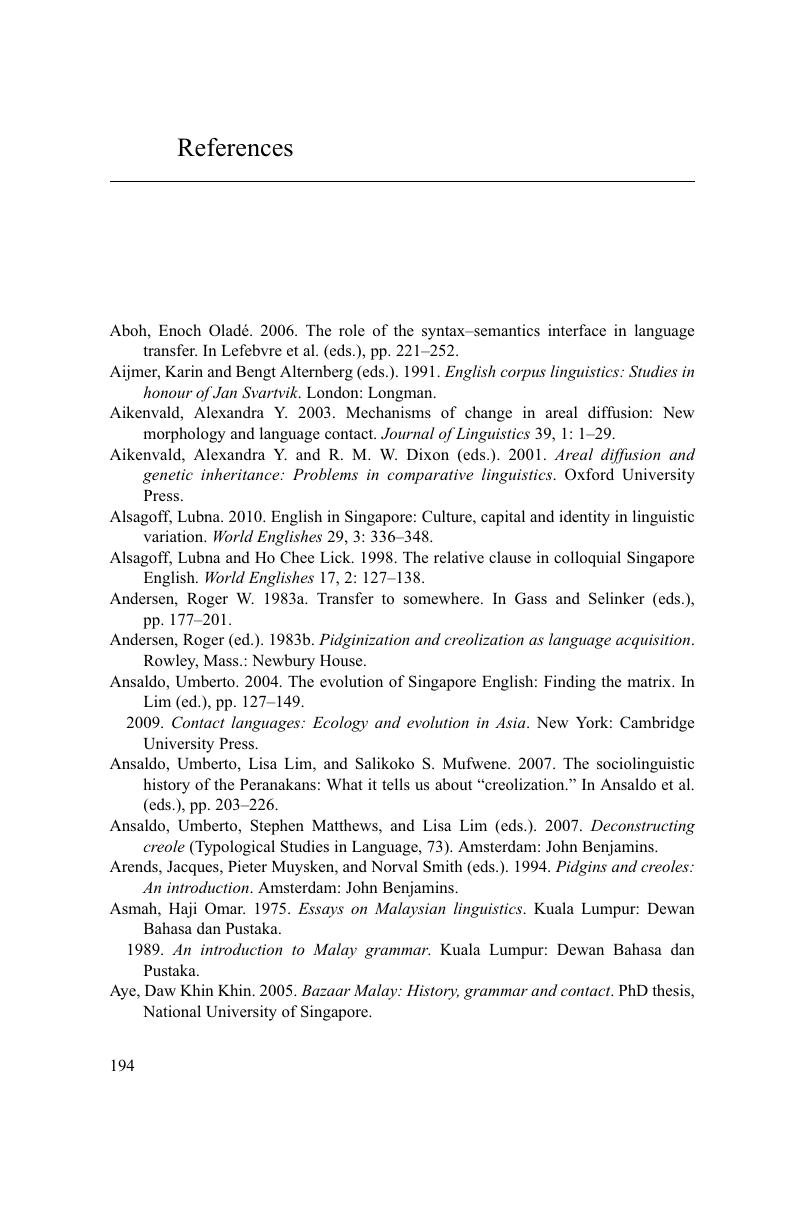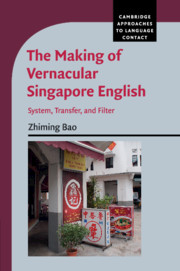Book contents
- The Making of Vernacular Singapore English
- Cambridge Approaches to Language Contact
- The Making of Vernacular Singapore English
- Copyright page
- Contents
- Tables
- Series editor’s foreword
- Book part
- Glossary
- 1 Introduction
- 2 The ecology of Singapore English
- 3 Grammatical system and substratum transfer
- 4 Topic prominence, empty categories, and the bare conditional
- 5 Substratum, lexifier, and typological universals
- 6 Frequency, usage, and the circumscriptive role of the lexifier
- 7 Convergence-to-substratum
- 8 Epilogue
- References
- Index
- References
References
Published online by Cambridge University Press: 05 November 2015
- The Making of Vernacular Singapore English
- Cambridge Approaches to Language Contact
- The Making of Vernacular Singapore English
- Copyright page
- Contents
- Tables
- Series editor’s foreword
- Book part
- Glossary
- 1 Introduction
- 2 The ecology of Singapore English
- 3 Grammatical system and substratum transfer
- 4 Topic prominence, empty categories, and the bare conditional
- 5 Substratum, lexifier, and typological universals
- 6 Frequency, usage, and the circumscriptive role of the lexifier
- 7 Convergence-to-substratum
- 8 Epilogue
- References
- Index
- References
Summary

- Type
- Chapter
- Information
- The Making of Vernacular Singapore EnglishSystem, Transfer, and Filter, pp. 194 - 210Publisher: Cambridge University PressPrint publication year: 2015



